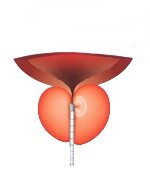





BPH Minimal Invasive Procedures

The main function of the prostate is to produce fluid? that transports sperm during ejaculation. The average size of the prostate gland is about the size of a walnut. The prostate will begin to grow again when the man reaches middle age. An enlarged prostate can cause several different problems for the urinary system. The reason for this growth is unknown (Generic Viagra).
Benign prostatic hyperplasia (BPH) refers to the increase in size of the prostate. It leads to symptoms of urinary hesitancy, frequent urination, dysuria (painful urination), increased risk of urinary tract infections, and urinary retention.?
?
HOW IS BPH TREATED?
Medication is often prescribed as the first treatment option, there are many patients who do not achieve success with this line of treatment. Those patients may not achieve sustained improvement in symptoms or they may stop taking the medication because of side-effects.
It is always important to follow all directions provided by the doctor and continue to visit your doctor as scheduled.
There are options for treatment in a urologist's office before proceeding to surgery. The two most common types of office-based therapies are transurethral microwave thermotherapy (TUMT) and transurethral needle ablation (TUNA). Both of these procedures rely on delivering enough energy to create sufficient heat to kill cells in the prostate. The goal is for the prostate to shrink as the dead tissue is reabsorbed by the body, the prostate shrinks, relieving the obstruction of the urethra.
These procedures are typically performed with local anesthesia, and the patient returns home the same day.
The most recent American Urological Association (AUA) Guidelines for the Treatment of BPH in 2003 lists minimally invasive therapies including TUMT and TUNA as acceptable alternatives for certain patients with BPH.
WHAT IF MEDICINE DOES NOT TREAT ME?
If medical treatment fails, and the patient lects not to try office-based therapies or the physician determines the patient is a better candidate for transurethral resection of prostate (TURP), surgery may need to be performed. In general, TURP is still considered the gold standard of prostate interventions for patients that require a procedure. This involves removing (part of) the prostate through the urethra.
Newer techniques involving lasers in urology have emerged in the last 5?10 years. similar technology called Photoselective Vaporization of the Prostate (PVP) with the GreenLight (KTP) laser have emerged very recently. This procedure involves a high-power 80-watt KTP laser with a 550-micrometre laser fiber inserted into the prostate. This fiber has an internal reflection with a 70-degree deflecting angle.?
Another procedure termed HIFU has also been gaining acceptance around the world. The delivery device for HIFU procedures is a disposable side-firing fiber that directs the beam from a high-power 100-watt laser at a 70-degree angle from the fiber axis.
Post surgery care often involves placement of a catheter or a temporary prostatic stent to permit healing and allow urine to drain from the bladder.
